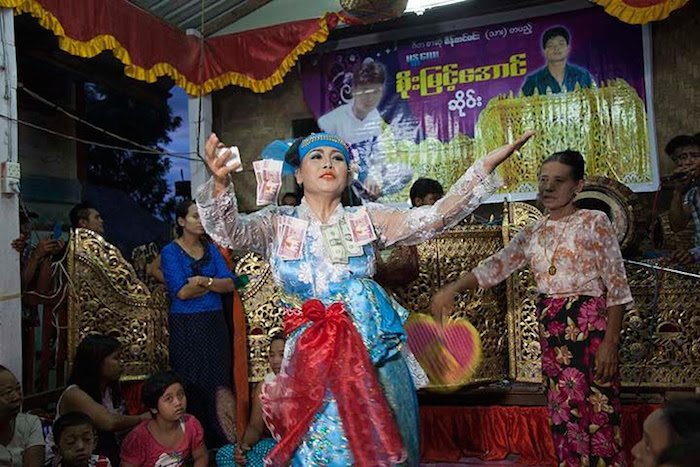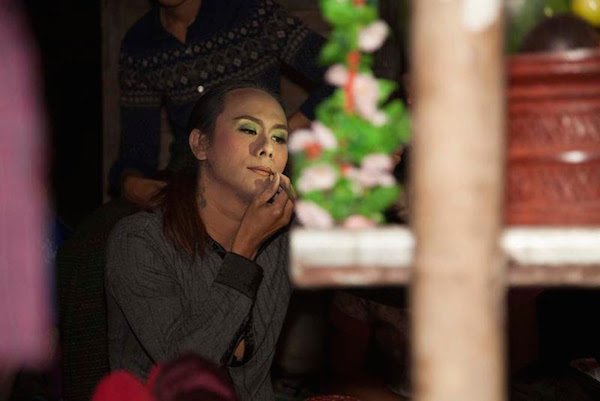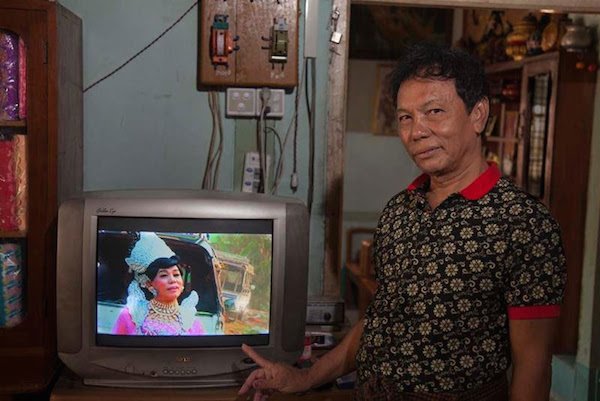Profile: Mariette Pathy Allen Documents the Gender-Blurring Spirit Mediums of Thailand and Myanmar

|
|
|
Mariette Pathy Allen has watched the world change since 1978.
That year, she was staying at an inn in New Orleans when she met and befriended a group of cross dressers. “They were in gowns, wore makeup, and frankly I didn’t know what I was looking at,” she recalls, “but they asked me to have breakfast with them. I had my camera and shot a group portrait. In the shot, they were looking off in various directions, but one person was looking straight back at me, and through the lens what I saw was not a man or a woman but the essence of a human being — the soul of a person. I thought, I have to have this person in my life."
The encounter would set Allen on a new path. That person, it turned out, lived only 20 blocks from Allen on the Upper West Side of Manhattan. Through her, Allen began attending conferences and other events focusing on the cross-dressing community, and she has spent the following decades using her camera to document the lives of transgender people and others who blur traditional ideas of gender. Her first book, released in 1989, was Transformations: Crossdressers and Those Who Love Them. By 2013, Slate called Allen “the unofficial photographer of transgender life.”
In 2014 Allen released her book TransCuba, which documented how the transgender community there was emerging into the public eye as the island nation transitioned into a more open society. Now Allen has brought out her latest book, Transcendents: Spirit Mediums in Thailand and Burma, which looks at the gender roles among spirit cults in those countries.



The new book came about after Allen attended a festival of spirt mediums in Myanmar in 2014.
“These practitioners of animism, a belief in the spirits of ancestors, animals, flora, and other objects, are a thriving minority in a society that is predominantly Buddhist,” notes Hyperallergic. Within this community, as Allen shows, there is an acceptance of gender variance that is absent in the country at large.
Allen was led to Myanmar by Eli Coleman, professor and director of the Program in Human Sexuality at the University of Minnesota, who notes in the new book that he discovered the gender variance in Burmese spirit mediums in 1987. He later found the same type of phenomenon in Thailand.
“Coleman notes that in the past most Burmese spirit mediums were women,” notes Hyperallergic. “Over the past 50 years, as women gained more opportunities in their careers and education, more male-born mediums became part of this practice. And in these positions, they find not only acceptance of homosexuality and femininity, but economic and spiritual power. Allen’s photographs include portraits of mediums, scenes from the festivals where worship involves a visual cacophony of dancing, food, music, and color, and intimate shots of the mediums’ home altars.”
“These stories and photographs illustrate the universality of gender variant behavior,” writes Coleman. “They show how the status of transgender individuals is socially constructed and more or less stigmatized depending on the context. I hope that this book illustrates that when sanctioned space and citizenship is provided, gender variant people have a chance to participate fully in family and society.”
The book also features a preface by American transgender multimedia artist Zackary Drucker, who has also guest edited the most recent issue of Aperture magazine.



Allen ended up making four trips of three weeks each to Mandalay, Myanmar, and Lampang, Thailand for the new book. The publisher, Daylight Books, notes that she “was impressed by the intensity of the mediums' devotion to the spirits and the traditions, and the graceful way they expressed their gender identity and sexuality.”
“They do it because the spirits want it. That is the understanding,” she says. “Some of the men have transitioned and others are basically cross dressers only for the occasions of festivals and important events.”
The experience was very different from the one she encountered in Cuba. “There, the transgender community is not appreciated, to put it mildly,” she says.
Looking back at her career, Allen says she “was privileged” to record a world that was once all but invisible. “I’ve always been interested in roles and gender variance and rules. I found it an extreme relief to discover that other cultures and societies could organize themselves in ways different from typical western culture,” she says.

And she has seen culture evolve. “In the last 40 years it’s gone from total shame and guilt and fear — when I first got involved with the cross-dressing community, some of the people I photographed had grown up thinking they were insane. They couldn’t go to church and couldn’t find anything they could identify with. It’s been an amazing change and it’s taken a tremendous amount of work and activism to do it.”
Allen has been a part of that change.


